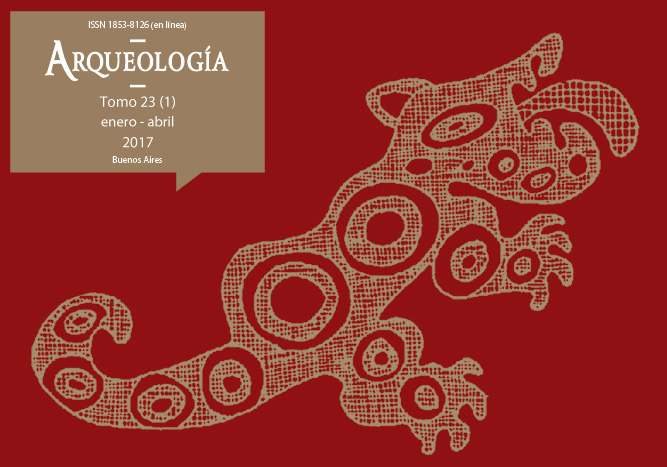Tumbas, cuentas e intercambio en el noroeste argentino: primera caracterización ED-XRF de objectos excepcionalmente formatizados
Keywords:
ED-XRF, Noroeste Argentino, Período Formativo, Tráfico caravanero, Cuentas, Crisocola, Turquesa, Variscita
Abstract
En el valle de Tafí las investigaciones arqueológicas tienen un profundo acervo histórico para el Noroeste Argentino. La mayoría de los asentamientos arqueológicos pertenecen al Período Formativo (500 BC- 1000 AC), los cuales han sido estudiados desde perspectivas diferentes. Este artículo presenta los resultados obtenidos de materiales recuperados en una tumba ubicada dentro de una unidad residencial Formativa. Se llevaron a cabo análisis no destructivos utilizando la técnica ED-XRF para caracterizar cuentas con diseños excepcionales datadas en 1560±35 BP. Estas se confeccionaron en crisocola, variscita y turquesa, todos alóctonos en el valle. Estos resultados indican que el valle de Tafí formó parte de la ruta de tráfico caravanero que cruzó el Noroeste Argentino como uno de los límites orientales de este patrón de circulación durante el Formativo temprano.Downloads
Download data is not yet available.
How to Cite
Sampietro Vattuone, M. M., Martínez Stagnaro, S., García Giménez, R., Peña Monné, J. L., Roldán, J., & Maldonado, M. G. (1). Tumbas, cuentas e intercambio en el noroeste argentino: primera caracterización ED-XRF de objectos excepcionalmente formatizados. Arqueología, 23(1), 27-43. https://doi.org/10.34096/arqueologia.t23.n1.3656
Section
Articles
Authors who publish in this journal agree to the following conditions:
- Authors retain copyright and yield to the journal right of first publication with the work registered with attribution license Creative Commons, which allows third parties to use the published always mentioning the authorship of the work and first publication in this magazine.
- Authors can make other independent and additional contractual arrangements for the non-exclusive distribution of the version of the article published in this issue (p. Eg., Inclusion in an institutional repository or publish it in a book), provided that clearly indicate that the work was published for the first time in this magazine.
- It allows and encourages the author / s to publish their work online (eg institutional or personal pages) before and during the process of revision and publication, as it can lead to productive exchanges and greater and more rapid dissemination of work published (See The Effect of Open Access).





(1)13.png)






1.jpg)
1.jpg)


13.png)
1.png)


(1)1.png)









